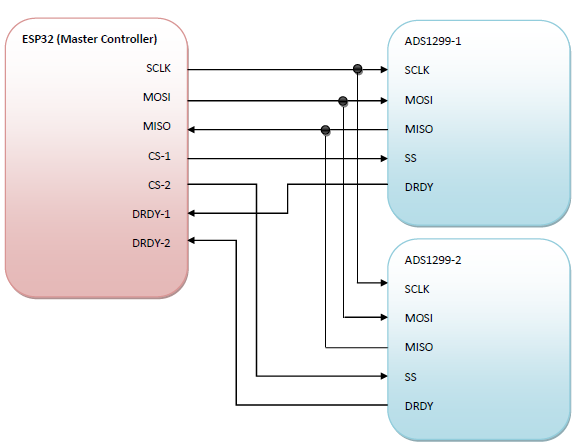Hello Everyone
We have developed a board comprising of two ADS1299 and controller. As per my understanding of guidelines given by datasheet and TI forums, for multiple device
- Clock should be synchronized across all ADS1299. One posible way is to let one ADS1299 runs on internal oscillator and export its internal clock to other ADS1299.
- Use START signal to synchronize conversion for all devices.
- Check DRDY signal of any device for data availibility.
Unfortunately we initially designed our board in a way that both ADS1299 run on their internal oscillator independently. Both devices DRDY signal are checked for their respective data availability. Block diagram of connection is follow.
Now when we run our both ADS1299 at 250Hz rate, their is periodic jitter (expected time is 4000 usec between data packets) as shown below. Clearly this phenomenon causes packets to miss.

So now my question is that is their any thing i can do without redesigning my PCB to solve this issue or i must use synchronized clock source (Resulting in PCB redesign).
Really appreciate any help in this regard.
Thanks
Kamran




